Collection of Thirty One English Carved Ivory Dog Whistles
A Collection of Thirty One English Carved Ivory Dog Whistles Depicting Various Hunting Hounds Including Greyhounds Blood Hounds Beagles English Pointers Lurchers and One unusual Crossed Wild Boar / Dog with Protruding Tusks
The eyes inlaid with glass or horn
19th Century
Size: 7cm long - 2¾ ins long (max) / 4cm long - 1½ ins long (min)
The eyes inlaid with glass or horn
19th Century
Size: 7cm long - 2¾ ins long (max) / 4cm long - 1½ ins long (min)
A Collection of Thirty One English Carved Ivory Dog Whistles Depicting Various Hunting Hounds Including Greyhounds Blood Hounds Beagles English Pointers Lurchers and One unusual Crossed Wild Boar / Dog with Protruding Tusks
The eyes inlaid with glass or horn
19th Century
Size: 7cm long - 2¾ ins long (max) / 4cm long - 1½ ins long (min)
The eyes inlaid with glass or horn
19th Century
Size: 7cm long - 2¾ ins long (max) / 4cm long - 1½ ins long (min)
In 1876 Francis Galton invented a silent whistle ‘Galtons Whistle’ which emitted sound in the ultra-sonic range which dogs and domestic cats can hear. It is believed that the feral ancestors of cats and dogs evolved this higher range hearing in order to detect the high frequency sounds made by small rodents, their preferred prey. Galton’s invention overtook the old form of hunting dog whistle as it conveniently made no loud sound only a quite hissing.
One of the crucial requirements for really successful hunting is a well trained pack of hounds or individual gun dog. Whistles were used for training on command and to communicate instructions such as when to go and when to stop. All hound breeds can be traced back to a distinctive early type of running dog which can be found in ancient Roman frescoes with long ears and a slender body. The Egyptians also kept hunting dogs known as ‘gaze hounds’ for their ability to see a long way in the desert. With the change in hunting conditions the breeding and maintenance of the larger hounds declined and was replaced by the smaller modern varieties of dog.
One of the crucial requirements for really successful hunting is a well trained pack of hounds or individual gun dog. Whistles were used for training on command and to communicate instructions such as when to go and when to stop. All hound breeds can be traced back to a distinctive early type of running dog which can be found in ancient Roman frescoes with long ears and a slender body. The Egyptians also kept hunting dogs known as ‘gaze hounds’ for their ability to see a long way in the desert. With the change in hunting conditions the breeding and maintenance of the larger hounds declined and was replaced by the smaller modern varieties of dog.
Ex Private English collection formed over thirty five years
Collection of Thirty One English Carved Ivory Dog Whistles
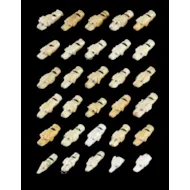
SOLD
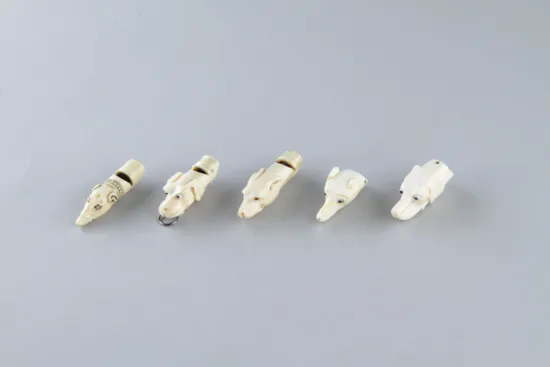
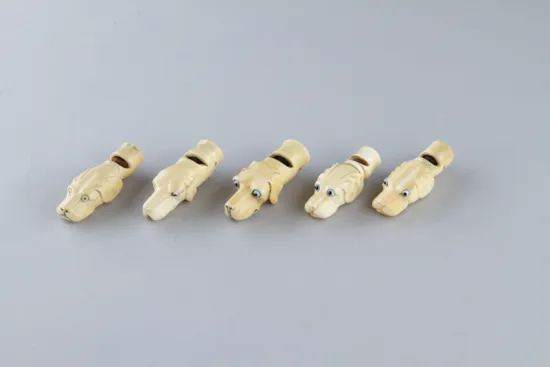
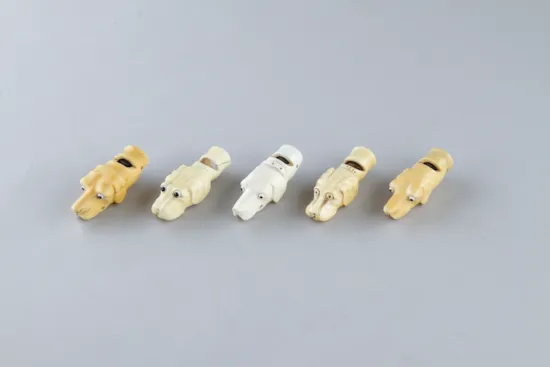
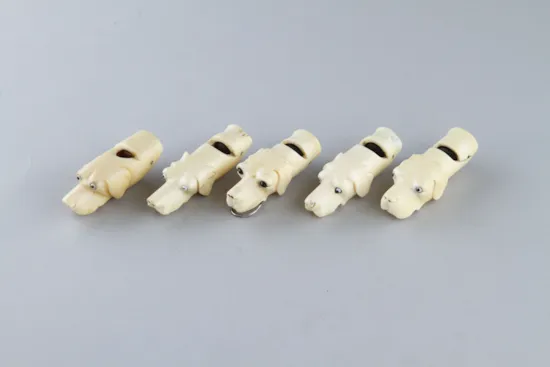
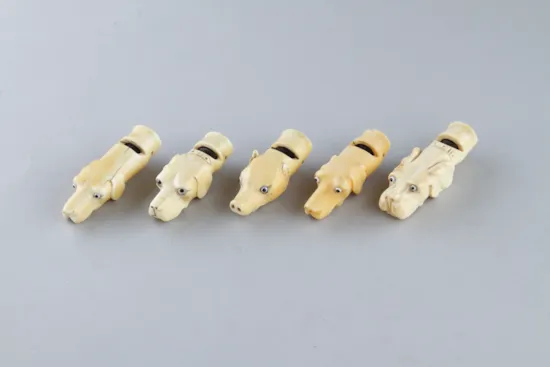
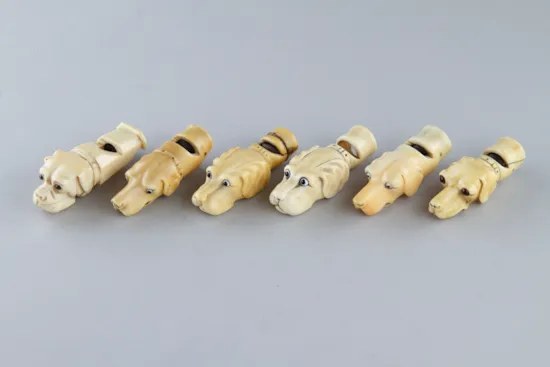






YOU MAY ALSO LIKE

